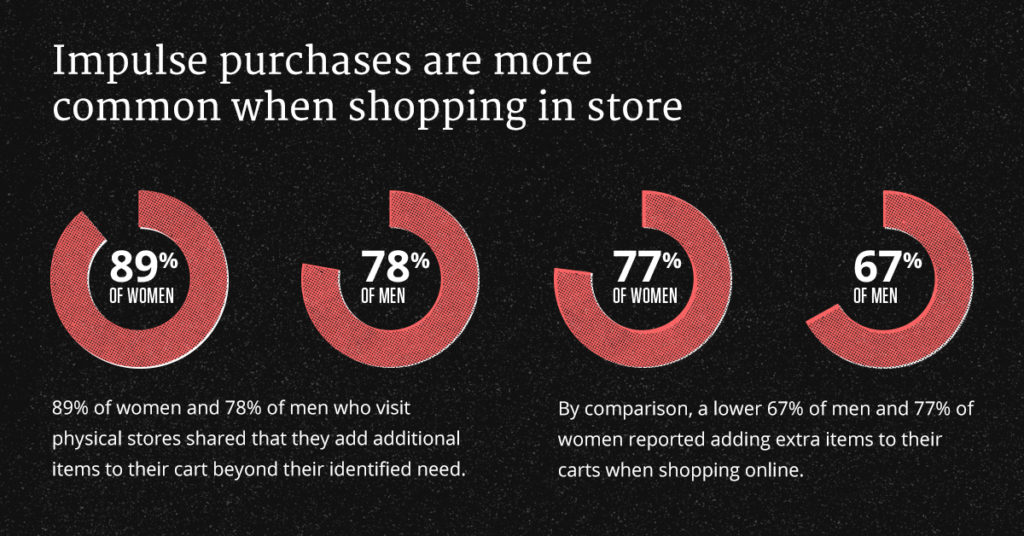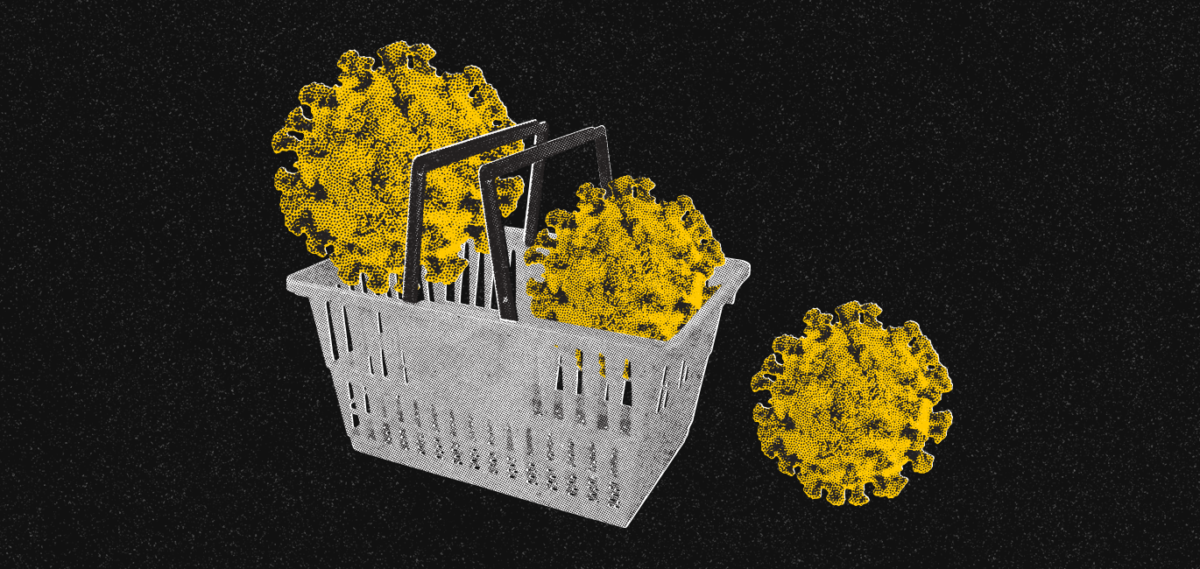The lockdown and economic fallout caused by the emergence of the novel coronavirus pandemic has had far-reaching consequences for many industries. While for some industries interruptions to consumption habits may prove to be temporary, some trends affecting the retail industry look set to become more enduring or even permanent.
COVID-19’s Early Impact on Retail
- Discretionary spending has contracted sharply, down by almost 9% in March 2020
- Sharply reduced demand for new apparel, footwear and accessories
- May 2020 retail sales data for the US showed a 17.7% increase—a new record—but more time is needed to understand whether this is an anomaly reflecting consumers unleashing pent-up demand from March and April or if it’s the beginning of a new upward trend
- eMarketer forecasts US total retail sales will fall more than 10% in 2020 and won’t return to pre-COVID-19 levels until 2022
- eMarketer is also calling for e-commerce sales to increase by 18% this year
- Coresight Research predicts between 20,000 and 25,000 store closures this year, of which 55% to 60% are within malls—a new record
- The previous high was a loss of 9,300 locations in 2019
Even before COVID-19 came along, retail has been engaged in a gradual, decades-long transformation. However, the pandemic has rapidly accelerated many of the changes that were either already happening or inevitable. Retailers must now quickly adjust and prepare for new customer experiences in a post COVID-19 world.
The Impacts of COVID-19 on Brick & Mortar Stores
As noted above, traditional retailers were engaged in a battle for survival long before the pandemic emerged. Many vanguards of the brick-and-mortar retail world have been closing stores and shedding debt and lease obligations through bankruptcy proceedings for years. To date in 2020, we’ve seen JCPenney, Neiman Marcus, J. Crew, Stage Stores, Pier 1 and Tuesday Morning all announce bankruptcy. Other venerable names, including Brooks Brothers, a leading force in apparel retailing for over 200 years, are said to be appointing advisors and may not be far behind.
Of course, bankruptcy can be an opportunity to regroup, reorganize, recapitalize and, hopefully, emerge as a more viable competitor. Many of the bankrupt retailers will return with a leaner physical footprint and fewer employees. For those who didn’t get their digital footprint and e-commerce strategy right the first time around, they’ll have a welcome chance for a reset.
There are other implications for the brick-and-mortar retail landscape, including issues impacting operational complexity and the supply chain as well as what to do with the overbuilt and now unneeded shopping mall space throughout America.
The oversupply of mall space has been worsening for decades. Changes to the US tax code enacted by Congress in 1954 encouraged mall development by permitting accelerated depreciation. As a result of this financial engineering, the growth rate of shopping malls between 1970 and 2015 in the US was twice the rate of growth of the population over the same period. In recent times, fewer shoppers were heading to malls. In the period following the financial crisis of 2007-2008, mall visits declined by 50% and have continued to fall since even as the economy rebounded.
Fashion and apparel retailers are now stuck with high inventories of the wrong season’s products, having been forcibly closed since the first days of Spring. This not only drives up storage costs but can also contribute to the tendency for retailers to sweep away distressed inventory through deep discounting. The problem is, when consumers become accustomed to buying at a discount they are less willing to consider paying full price again when the economy recovers, as we saw following the Great Recession twelve years ago.
The Impacts of COVID-19 on E-commerce
As destructive as the pandemic has been for traditional retailers, it’s been the opposite for e-commerce retailers. While there is a long-established trend of switching shopping habits from brick-and-mortar retailers to online stores, COVID-19 has accelerated this change considerably. In just three months, it caused movements that may have taken five years to manifest without the tailwind of a pandemic.
Italy, the European country with the highest number of infections and deaths from COVID-19, has seen e-commerce transactions rise 81 percent since the end of February. Across Europe, an additional 13 percent of consumers said they would browse online stores for the first time. While in China, large groups of new customers—specifically those aged 36 and above and those living in smaller, less prosperous cities— have begun shopping online in greater numbers.
But for all of its growth and potential, online shopping misses out on at least one aspect of in-store shopping— the impulse purchases that take place in-store. 89% of women and 78% of men report adding additional items to their cart during an in-store visit.

How are Retailers Responding to COVID-19?
With the decline in in-store traffic, it’s no surprise most retailers have seen a corresponding dip in their sales. But there are opportunities to be found and nurtured with services such as curbside pickup and BOPIS (Buy Online, Pick up In Store).
These hybrid marketing approaches offer convenience to consumers by allowing same-day (often within two-hour) collection with no additional shipping or handling costs. However, they also create new challenges for retailers in the areas of labor, inventory management, software and point-of-sale systems and even parking lot space utilization.
Orders placed online for collection by these methods increased by 208% in the first three weeks of April 2020 compared to the same period of 2019. They are proving to be a popular choice with consumers who may wish to continue shopping this way even when regulations can be relaxed and stores can fully reopen. It remains to be seen whether retailers will eventually try to de-emphasize these methods due to their higher costs.
Many of the hundreds of thousands of new jobs created by grocery retailers in recent months have been to staff these hybrid shopping models. And while that’s a welcome storyline at a time when millions of American workers have been furloughed or displaced altogether, time will tell whether grocers will continue to bear the additional costs when other options are once again viable.
What Will the Future of Retail Look Like?
Retailers need to evolve by redefining the role of the store and integrating technology at the right points in the customer journey to streamline and improve the shopping experience.
We hope to see more integration of contactless, self-serve technology that allows customers to navigate the store and find what they need as quickly and safely as possible. Already in some retail environments, such as Apple stores, customers are able to make purchases from anywhere in the store rather than gathering in a line at a register. Integrating voice assistants and mobile technologies can assist customers in achieving their goals inside the store with innovations like wayfinding—directing customers to the aisle displaying the products they’re seeking. Elevating the customer experience and improving customer service will be key.
The opportunity exists to better integrate the online and in-store shopping experience. For example, customers could engage with content about a styling experience or menu plan online then be able to purchase everything needed conveniently pre-packaged and ready for purchase in the store.
Even once COVID-19 is somehow controlled, consumers are likely to respond well to open spaces, or at the very least the feeling of openness. Store layouts need to be reworked for a better flow of customers.
In certain areas of retail, it’s possible we could see wider use of some of the concierge-style services luxury merchants previously reserved exclusively for their VIP customers. Personal shoppers, private or semi-private store access and other exclusive privileges could become additional, optional elements of the shopping experience.
At Tallwave, we see the challenges facing retailers as opportunities to reimagine a new shopping experience. If you need help thinking through the evolution of your retail operations, give us a call. We’d welcome the chance to work with you to evolve your customer experience and keep your customers coming back time and again.



